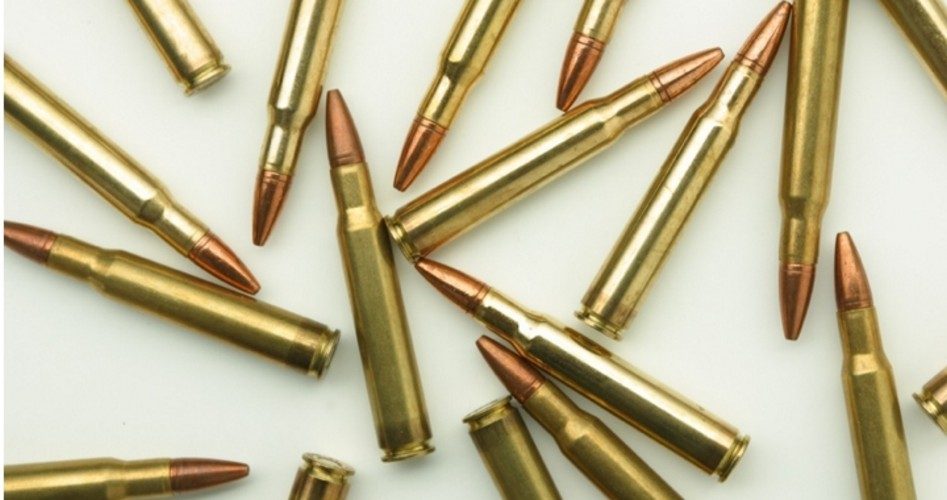
Awr Hawkins, a columnist for Breitbart.com, asked back in February if the present shortages of ammunition are a deliberate attempt by government agencies to so overwhelm existing manufacturers with orders for billions of rounds that it is resulting in “de facto” gun control. Hawkins asked: “What if the shortage is intentional?”
On Wednesday he raised the same question:
While many of the conspiracy theories that have been propounded to explain DHS [Department of Homeland Security] ammo purchases ought to be rejected out of hand, it seems increasingly reasonable to believe these multiple, massive ammo orders have been placed one upon the other to exasperate the already low supplies in the private market.
It continues to sound like gun control by another name.
Certainly there are those who see a conspiracy behind every tree, none more so perhaps than Mac Slavo. Writing for his inelegantly named SHTF Plan, he points out that since President Obama was first elected in 2008, Americans have purchased more than 65 million guns, which averages one new gun purchase every 1.5 seconds. Says Slavo, this “suggests there is much more … than just people stocking up to go hunting or sports shooting.” And then, without providing sources, Slavo ticks off the statistics: Smith and Wesson is running at full capacity, Ruger is ramping up production to meet demand, Armalite is “maxed out,” Colt is increasing its production runs, Springfield Armory is “running 30-45 days behind,” while Magpul “is behind 1 MILLION (his bold) mags.… Do not expect any large quantities anytime soon.”
And as far as re-loaders are concerned, Slavo says, “It could be 6-9 months before things get caught up. Sorry for the bleak news.”
Slavo apparently didn’t get the memo, however, from Hornady Manufacturing Company, the largest independent producer of bullets in the world. On February 12, the company issued a short statement on availability and provided some responses to rumors floating around the Internet:
The current political climate has caused extremely high demand on all shooting industry products, including ours. Empty retail shelves, long back orders, and exaggerated price increases on online auction sites — all fueled by rumors and conjecture — have amplified concerns about the availability of ammunition and firearms-related items.
If the information you hear doesn’t originate from Hornady Manufacturing, don’t believe it.
Here are some of rumors we’ve heard, and questions we’ve received:
•Have you stopped production, or has the government forced you to stop?
◦Not at all.
•Did you stop selling bullets so you could only make loaded ammunition?
◦Absolutely not.
•Since we can’t find your product you must be selling it all to the government.
◦Nope, less than 5% of our sales are to government entities.
•Why can’t you make more? Ramp up production? Turn on all the machines?
◦ We’ve been steadily growing our production for a long time, especially the last five years. We’ve added presses, lathes, CNC equipment, people and space. Many popular items are produced 24 hours a day.
Several hundred Hornady employees work overtime every week to produce as much as safely possible. If there is any question about that — please take a tour of the factory. You’ll be amazed at what you see.
We are producing as much as we can; much more than last year, which was a lot more than the year before, etc. No one wants to ship more during this time than we do.
We appreciate everyone’s understanding and patience. We don’t know when the situation will improve, so please bear with us a little longer. And remember, when it comes to Hornady Manufacturing, if you don’t hear it from us, please don’t believe it.
This isn’t the first time that demand for ammunition has outstripped supply. Following the election of President Obama in 2008, there was an almost immediate shortage of small arms ammunition but by September 2011, ammunition supplies for the most popular calibers — .45 ACP and .40 S&W — were back to normal.
Back in late 1973, there was a toilet paper shortage. Writers for Johnny Carson’s Tonight Show had learned of a rumor that the Navy was in danger of running out of toilet paper partly because of the 1973 oil crisis and decided to have a little fun with it. In his opening monologue on the evening of December 19, Carson asked: “Do you know what’s disappearing from supermarket shelves? Toilet paper! There’s an acute shortage of toilet paper in the United States!”
The next morning 20 million people headed to their local grocery stores and bought up as much TP as they could carry. By noon nearly every major store’s shelves were empty. Some stores tried rationing. Others just told customers when they expected their next shipment and to come back then.
For three weeks TP was in extremely short supply, so much so that Carson apologized a few days later that there was no shortage after all, that it was just a gag.
The shortage of toilet paper became a self-fulfilling prophecy, a prediction about future events that causes those events to come true. Such self-fulfilling prophecies can be found in ancient literature, and have even been “formalized” in social science. For example, sociologist Robert K. Merton codified the expression where he defined such a prophecy as,
a false definition … evoking a new behavior which makes the original false conception come true. This … perpetuates a reign of error.
M. L. McPherson, writing for the National Association for Gun Rights, explained what is actually happening: Demand suddenly rises so quickly that it outstrips supply. Supply is slow to catch up and so the perception that shortages will last a long time and, further, that they are due to market manipulation increase over time. Whenever supply comes in, buyers sweep it up, leaving shelves empty and the impression that there are continuing shortages.
Explains McPherson, it doesn’t take much of an increase in demand to create the impression of shortages:
Here is the critical fact: before the [election of Obama], no related manufacturer had the facilities to increase production [by] more than about 40%. Moreover, even if a company did have such capacity, it could not affordably obtain raw materials to do so — companies [down line] that supply raw materials cannot increase capacity more than about 40%.
In economics this is called the supply-chain bottleneck: Somewhere down the supply chain there will be a supplier that simply cannot ramp up his production as fast as those up line would like. It becomes the slowest vessel in the convoy. During wartime a whole convoy could only move as fast as the slowest ship. So it is with a sudden increase in demand, no matter what the reason.
McPherson says it’s just reality. Manufacturers will concentrate on their most profitable lines and only pause when either 1) the market becomes saturated, or 2) something breaks and needs fixing.
Massad Ayoob, writing for Back Woods Home magazine, put the matter calmly and matter-of-factly:
[Present shortages] may mean nothing more malignant than that a large government agency wants a contractual guarantee that they’ll be able to get enough to train and qualify their people, even if their actual deliveries never come close to the top level to which that contract holds the manufacturer…
I don’t see this as a harbinger of martial law and civil war as some do. Being in law enforcement myself, I’ve seen the severe shortages that have plagued police agencies in the last several years.
But in the real world he suggests buying when there are supplies available even though eventually, once again, supply and demand will come back into balance. If nothing else, he says,
if inflation runs rampant and turns hundred dollar bills into toilet paper, ammo is always worthwhile for barter.
A graduate of Cornell University and a former investment advisor, Bob is a regular contributor to The New American and blogs frequently at www.LightFromTheRight.com, primarily on economics and politics. He can be reached at badelmann@thenewamerican.com.



